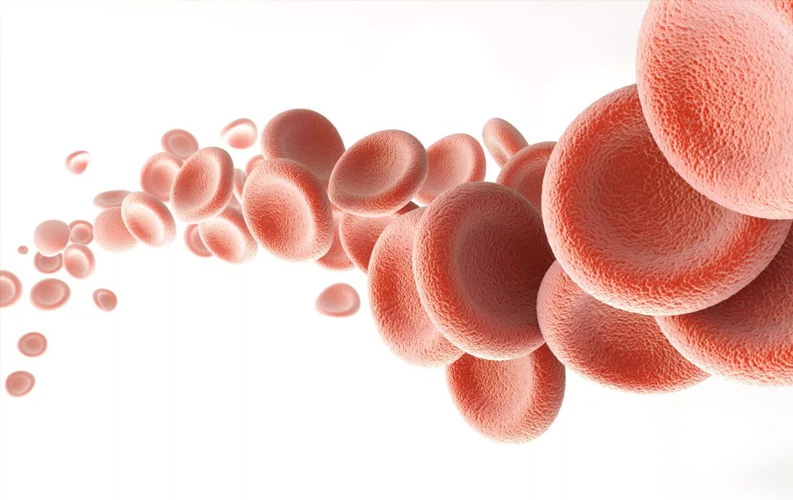
Can Healthy Blood Vessels Help Prevent Diabetes?
It’s very common for people to be diagnosed with diabetes soon after they have suffered a heart attack. Patients often chalk this double whammy up to bad luck, believing that they were hit inexplicably with two seemingly unrelated diseases at once. In fact, there is a strong link between insulin resistance — the disorder that leads to type 2 diabetes — and heart attack risk. In a study of patients treated in the ER for a heart attack, the researchers found that after excluding known diabetics, 66 percent of the remaining patients had abnormal blood sugar levels that met criteria for diabetes or prediabetes.
If untreated, heart disease and diabetes typically progress silently over many years until they become severe enough to trigger devastating complications. But in people with both diseases, which one occurs first? An intriguing new study published in Circulation Research challenges prevailing medical beliefs — and may offer clues about better ways to prevent these potentially life-threatening disorders. Here’s a closer look at the study and key takeaways about protecting arterial wellness from the BaleDoneen Method.
What was the purpose of the study?
Scientists from the Joslin Diabetes Center, Harvard and other centers conducted a series of studies to examine the interplay among insulin, body fat, and the vascular system. Normally, insulin — a hormone produced by the pancreas — helps cells in the body use glucose (blood sugar) for energy. In people with insulin resistance (IR), the body becomes insensitive to insulin, forcing the pancreas to crank out higher and higher amounts, trying to keep up with demand. Eventually the pancreas becomes exhausted and blood sugar starts to rise.
Very often, people with IR have high levels of both insulin and glucose circulating in their bloodstream. As long as IR goes untreated, a perfect storm of dangerous events occurs at the cellular level, affecting all the body’s arteries. IR, which primarily strikes people who are overweight or obese, plays a role in every stage of the development of atherosclerosis, the buildup of plaque inside the artery wall that can led to heart attacks and strokes.
Obesity, especially when coupled with a sedentary lifestyle, is also a major culprit in the development of heart disease. However, the precise mechanisms through which excessive body fat and blood-vessel activity contributes to atherosclerosis and diabetes have been unclear.
What did the researchers discover?
Led by George King, MD, Joslin’s chief scientific officer and director of research, the team identified a new pathway through which cells in the blood-vessel lining — known as the endothelium — drive energy metabolism. Some doctors call the endothelium “the brain” of the arteries because it plays a major role in regulating blood pressure and many other blood-vessel functions.
The discovery challenges scientific dogma by suggesting that, contrary to what was previously thought, endothelial dysfunction may actually be the root cause of unhealthy metabolic changes that lead to diabetes — not an effect of the disease. “In people with diabetes and insulin resistance, the idea has always been that white fat and inflammation causes dysfunction in the blood vessels, leading to the prevalence of heart disease, eye disease and kidney disease in this patient population,” said King in a news release.
In addition to blood-vessel abnormalities, diabetes is also linked to undesirable reductions in the body’s storage of brown fat. Unlike white fat, which stores energy — and can lead to obesity if we have too much of it — brown fat burns energy, maintains body temperature and helps regulate our weight. In one of the team’s experiments, they found that mice that were genetically engineered to have increased sensitivity to insulin were thinner and had healthier arteries than control animals — even when fed a high-fat diet.
What did the researchers conclude?
“Everything is connected,” said King. “We think blood vessels and endothelial cells play an important role not just in regulating brown fat, but also in regulating whole body’s metabolism. Thus, these endothelial cells are a key factor in regulating weight and developing diabetes and, as other labs have shown, blood vessels appear to be a major regulator of brain function as well. Intervening at the level of endothelial cells could have a major impact on many diseases.”
The study also revealed that insulin signals blood vessels to produce more nitric oxide — the best “food” to protect the endothelium and boost its health. This, in turn, raised production of healthy brown fat. “What we found here is that the endothelial cells lining the blood vessels can have a major controlling effect on how much brown fat you develop,” added Dr. King. “That finding is very exciting because in the past we thought diabetes causes cardiovascular problems, but that relationship appears to be reversed in this scenario.”
What’s the BaleDoneen Method takeaway about this research?
While these findings were made in animals — and further investigation is needed to see if they apply to people — the study adds to a vast body of literature highlighting the importance of arterial wellness in chronic disease prevention. To that end, the BaleDoneen Method has pioneered a new evidence-based medical specialty called “Arteriology,” which is designed to optimize the health of the 60,000 miles of blood vessels in our bodies and help people avoid heart attacks, strokes, diabetes, chronic kidney disease, erectile dysfunction, fatty liver disease, Alzheimer’s disease, heart failure, and other chronic diseases of aging.
The BaleDoneen Method uses a team approach in which medical and dental providers work together to protect our patients’ oral and systemic health, bridging the traditional gap between medicine and dentistry. Arteriology also encompasses the work of many other healthcare specialties, including family physicians, functional and integrative medicine doctors, sleep specialists, psychologists, nutritionists, cardiologists, neurologists, geneticists and other specialists looking to incorporate personalized medicine and genetically guided treatment into their areas of practice.
BaleDoneen practitioners have been called “disease detectives” because our comprehensive evaluation checks for a wide range of root causes that can lead to arterial disease, diabetes and other chronic illnesses if they go undiagnosed and untreated. Ultimately, our mission is to save lives by protecting and enhancing the wellness of our patients’ hearts, brains, and other vital organs, along with the blood vessels that supply them.
